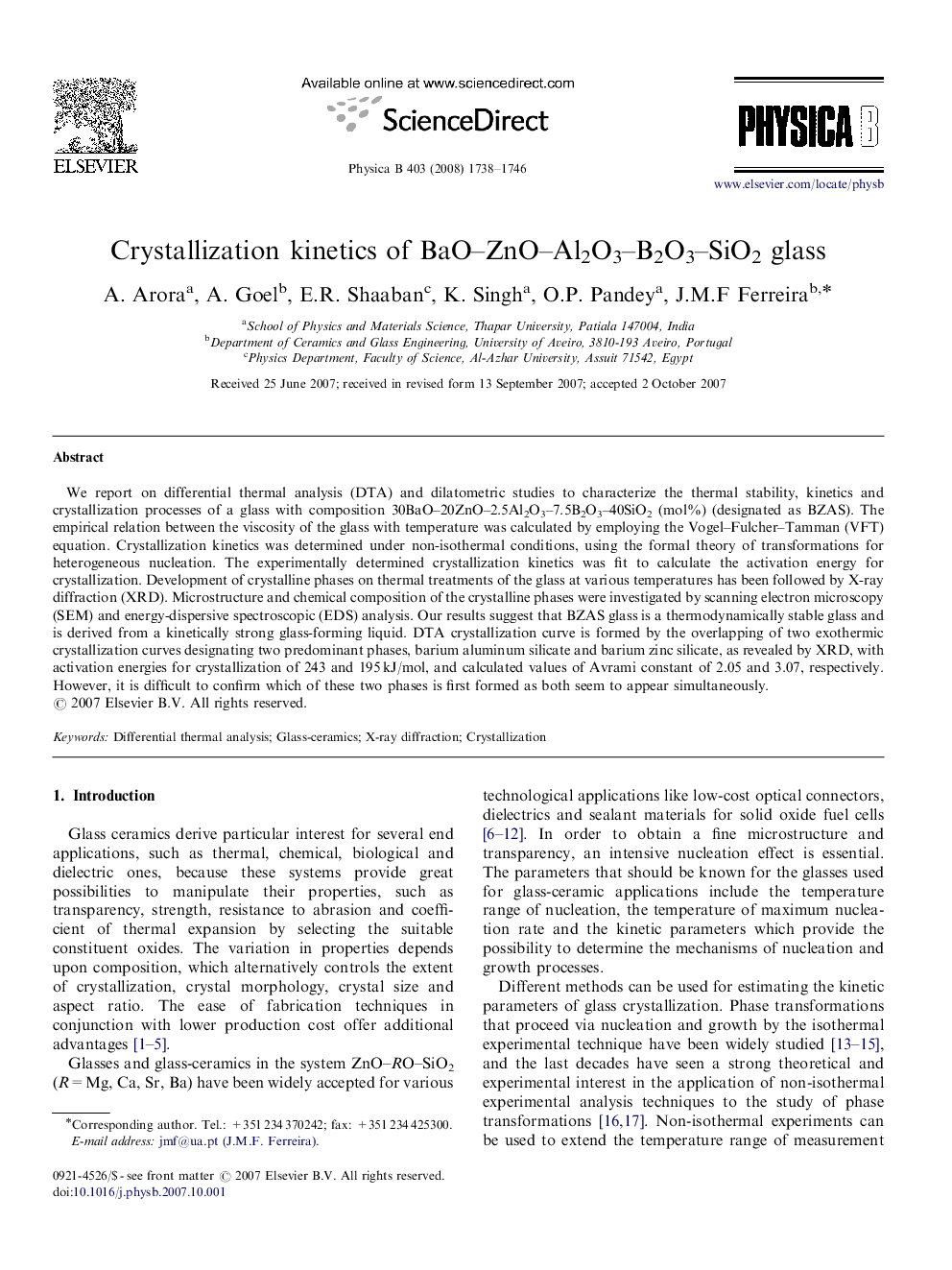| Article ID | Journal | Published Year | Pages | File Type |
|---|---|---|---|---|
| 1814759 | Physica B: Condensed Matter | 2008 | 9 Pages |
We report on differential thermal analysis (DTA) and dilatometric studies to characterize the thermal stability, kinetics and crystallization processes of a glass with composition 30BaO–20ZnO–2.5Al2O3–7.5B2O3–40SiO2 (mol%) (designated as BZAS). The empirical relation between the viscosity of the glass with temperature was calculated by employing the Vogel–Fulcher–Tamman (VFT) equation. Crystallization kinetics was determined under non-isothermal conditions, using the formal theory of transformations for heterogeneous nucleation. The experimentally determined crystallization kinetics was fit to calculate the activation energy for crystallization. Development of crystalline phases on thermal treatments of the glass at various temperatures has been followed by X-ray diffraction (XRD). Microstructure and chemical composition of the crystalline phases were investigated by scanning electron microscopy (SEM) and energy-dispersive spectroscopic (EDS) analysis. Our results suggest that BZAS glass is a thermodynamically stable glass and is derived from a kinetically strong glass-forming liquid. DTA crystallization curve is formed by the overlapping of two exothermic crystallization curves designating two predominant phases, barium aluminum silicate and barium zinc silicate, as revealed by XRD, with activation energies for crystallization of 243 and 195 kJ/mol, and calculated values of Avrami constant of 2.05 and 3.07, respectively. However, it is difficult to confirm which of these two phases is first formed as both seem to appear simultaneously.
